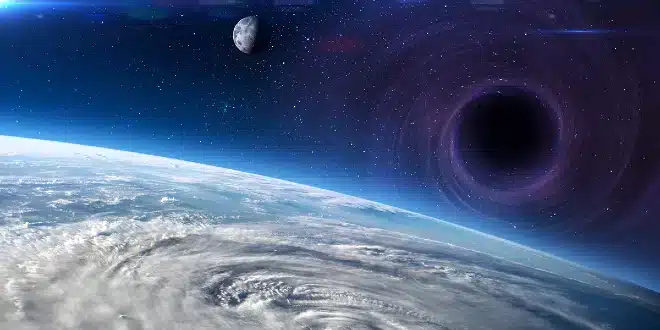In an intriguing new study, astronomers have discovered that tiny primordial black holes (PBHs) might be hidden within celestial bodies like moons, asteroids, or even planets such as Earth.
These black holes are believed to have formed shortly after the Big Bang from extremely dense regions of subatomic matter that underwent gravitational collapse. Currently, scientists classify PBHs as a form of dark matter and suggest they could be a source of primordial gravitational waves.
Recent studies suggest that these small PBHs could be residing inside the cores of neutron stars, dwarf stars, and main-sequence stars, gradually depleting their gas.
A group of physicists has introduced a novel method to detect these PBHs. They plan to track them inside planets and asteroids by observing microchannels left in large metal plates or slabs, which would indicate the passage of PBHs.
The research, led by De-Chang Dai from National Dong Hwa University in Taiwan and the Center for Education and Research in Cosmology and Astrophysics at Case Western Reserve University, alongside Dejan Stojkovic from the State University of New York, Buffalo, is detailed in a paper set to be published in the journal Physics of the Dark Universe after peer review.
The quest for PBHs isn’t new; it began after their potential existence was first proposed by Russian scientists Igor D. Novikov and Yakov Zeldovich in 1966.
In correspondence with Universe Today, Dai and Stojkovic explained their detection strategy through email, stating that if a small celestial body like an asteroid or moon has a liquid core and a solid crust, a PBH passing through would consume the core rapidly, potentially in weeks to months. If the crust’s material is strong enough to withstand the gravitational stress, it would remain intact, possibly leaving a hollow structure.
They noted that if the central black hole is somehow dislodged due to collisions, the resulting density of the celestial body would be less than that of typical rocky bodies with liquid cores. They highlighted that materials like granite could sustain hollow structures up to a tenth of Earth’s radius, suggesting a focus on smaller planetary bodies for their research.


